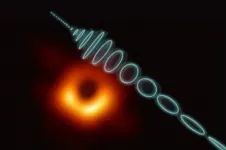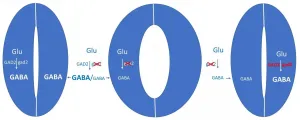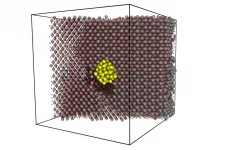Analysis of the sensitivity of the UK (B.1.1.7) and South African (B.1.351) variants to SA
2021-03-29
(Press-News.org) The B.1.1.7 and B.1.351 variants of SARS-CoV-2 were first detected in the UK and South Africa respectively, and have since spread to many other countries. Scientists from the Institut Pasteur joined forces with Orléans Regional Hospital, Tours University Hospital, Créteil Intercommunal Hospital, Strasbourg University Hospital and Georges Pompidou European Hospital to study the sensitivity of these two variants to neutralizing antibodies present in the serum samples of people who have been vaccinated or previously infected with SARS-CoV-2. They compared this sensitivity with that of the reference virus (D614G), which was until recently the most widespread strain in France. The scientists demonstrated that the UK variant is neutralized to the same degree as D614G, whereas the South African variant is less sensitive to neutralizing antibodies. To neutralize the South African variant, the antibody concentrations need to be six times higher than for D614G. This difference in sensitivity was also observed in vaccinated individuals; the antibodies in their serum are effective against the UK variant but less so against the South African one. The study was published in Nature Medicine on March 26th, 2021.
On December 14, 2020, the UK authorities informed WHO that a variant (B.1.1.7) had been detected in the south east of England. Within a few weeks, this variant took over from the viral strains circulating in this region and in London. On December 18, 2020, the South African authorities reported that a variant (B.1.351) had been detected and was spreading rapidly throughout three provinces of South Africa. According to WHO's epidemiological bulletin dated February 14, the UK and South African variants are now present in 94 and 48 countries respectively. These two variants are considered to be 'variants of interest' and are subject to epidemiological surveillance at national and international levels.
In a new study, scientists from the Institut Pasteur joined forces with Orléans Regional Hospital, Tours University Hospital, Créteil Intercommunal Hospital, Strasbourg University Hospital and Georges Pompidou European Hospital to study the sensitivity of the UK and South African variants to antibodies in comparison with the reference strain circulating in France (D614G). The aim of this study was to characterize the capability of antibodies developed by people who had been vaccinated or previously infected with SARS-CoV-2 to neutralize these new variants.
The scientists isolated the SARS-CoV-2 variants B.1.1.7 and B.1.351 using samples provided by the National Reference Center for Respiratory Infection Viruses, hosted at the Institut Pasteur. Serum samples of people who had been vaccinated or previously exposed to SARS-CoV-2 were used to study the sensitivity of the variants to the antibodies present in this serum.
"Previously, the efficacy of neutralization had been mainly assessed using tests with pseudoviruses. We believe that it's crucial to use authentic infectious virus strains in addition to pseudoviruses to assess viral sensitivity to neutralizing antibodies. In this study, we isolated and used authentic B.1.1.7 and B.1.351 strains and developed a novel rapid semi-automated neutralization assay based on 'reporter' cells that turn fluorescent after a few hours of infection", explained Olivier Schwartz, co-last author of the study and Head of the Virus and Immunity Unit at the Institut Pasteur.
The results of the study showed that the UK variant (B.1.1.7) was neutralized by 95% (79 out of 83) of the serum of people who had been infected with SARS-CoV-2 and whose samples were taken up to nine months after the onset of symptoms. The same proportions were observed for the D614G strain, which has been the most widespread strain in France since the start of the epidemic. Moreover, there was no major difference in the antibody concentrations required to neutralize the D614G or B.1.1.7 strains.
However, the scientists noticed a decline in neutralizing activity against the South African variant in 40% of the serum samples of individuals who had been exposed to the virus, for samples taken nine months after the primary infection.
They also demonstrated that to neutralize the South African variant (B.1.351), the antibody concentrations needed to be approximately six times higher than for D614G.
"We showed that the faster-spreading variants, particularly the South African one, have become partially resistant to the antibodies produced after a natural infection. This reduced efficacy is particularly visible among individuals with low antibody levels", commented Olivier Schwartz.
The research teams also investigated the serum samples of people who had been vaccinated with one of the first vaccines used in France (Pfizer-BioNTech COMIRNATY™). The vaccinated individuals were studied two to four weeks after their first vaccine injection. The results showed that after two weeks, the serum only neutralized the D614G strain, whereas the B.1.1.7 strain started to be neutralized at week 3, although less efficiently than D614G. The anti-B.1.351 response was negative up to week 3, and could be detected at week 4.
Four weeks after the first vaccine injection (i.e. one week after the second injection), the serum samples of the vaccinated individuals were almost as effective against the UK variant as against D614G, but remained less effective against the South African variant. 80% of the serum samples were neutralizing for D614G and B.1.1.7, and 60% of the samples were neutralizing for the B.1.351 variant.
"The vaccine generated a neutralizing response that efficiently targeted the D614G and B.1.1.7 strains, despite a delay in the emergence of neutralizing antibodies against B.1.1.7. The efficacy of neutralizing antibodies for the B.1.351 strain was lower", explained the co-last authors of the study, Sylvie van der Werf, Head of the National Reference Center for Respiratory Infection Viruses at the Institut Pasteur, and Thierry Prazuck, Head of the Infectious Diseases Department at Orléans Regional Hospital.
The scientists also analyzed the presence of neutralizing antibodies in the nasal samples of vaccinated individuals. They did not observe any neutralizing activity in the nasal mucosa of these people, apart from in individuals who had already been infected with SARS-CoV-2 prior to being vaccinated. This suggests that vaccination does not induce neutralizing antibodies in the nasal mucosa, at least at an early stage after vaccination (four weeks after the first injection).
INFORMATION:
ELSE PRESS RELEASES FROM THIS DATE:
2021-03-29
Whether for microscopy, data storage or sensor technology, many advanced technological applications that require specific functions rely on the structure of the electromagnetic field near the surfaces of materials. In nanosystems, so-called surface phonons, i.e. temporal distortions of the atomic lattice, contribute decisively to the physical and thermodynamic properties.
If surface phonons could be specifically manipulated, it would be possible to achieve better thermal conduction or heat transfer between two components with nanosurfaces. This could be used, for example, in detectors, sensors or in highly efficient passive cooling systems. In addition, surface phonons concentrate electromagnetic energy ...
2021-03-29
A paper by the Kavli Institute for the Physics and Mathematics of the Universe (Kavli IPMU) Director Ooguri Hirosi and Project Researcher Matthew Dodelson on the string theoretical effects outside the black hole photon sphere has been selected for the "Editors' Suggestion" of the journal Physical Review D. Their paper was published on March 24, 2021.
In a quantum theory of point particles, a fundamental quantity is the correlation function, which measures the probability for a particle to propagate from one point to another. The correlation function develops singularities when the two points are connected by light-like trajectories. In a flat spacetime, there is such a unique trajectory, but when spacetime is curved, there ...
2021-03-29
The recommendations are clear: physical activity is good for mental health. But it also depends on how varied it is. That's what a new study by researchers at the University of Basel shows, pointing to one of the reasons why well-being suffers during the pandemic.
A walk in the morning, a jog in the evening or even just going out to buy groceries: activity helps the psyche. Many are trying to stay active during the pandemic despite mandatory home office and limited leisure activities. Others find that they are moving significantly less than before the pandemic because previous everyday activities are off-limits due to measures taken against the spread of Covid-19.
Against this backdrop, a study led by Professor Andrew ...
2021-03-29
A new type of universal computer memory - ULTRARAM™ - has taken a step closer towards development with a successful experiment by Lancaster physicists.
Professor Manus Hayne, who is leading the research, commented: "These new results confirm the astonishing properties of ULTRARAM™, allowing us to demonstrate its potential as a fast and efficient non-volatile memory with high-endurance."
Currently, the two main types of memory, dynamic RAM (DRAM) and flash, have complementary characteristics and roles:-
DRAM is fast, so used for active (working) memory but it is volatile, meaning that information is lost when power is removed. Indeed, DRAM continually ...
2021-03-29
"I've been studying how plants regulate their water balance for over 35 years. To find a completely new and unexpected way for saving water has certainly been one of the most surprising discoveries in my life." So says Professor Rainer Hedrich, plant scientist and biophysicist from Julius-Maximilians-Universität (JMU) Würzburg in Bavaria, Germany.
Hedrich's group discovered this new strategy together with researchers from the University of Adelaide in Australia. The results have been published in the journal Nature Communications.
GABA quantity as stress memory
The publication shows: plants use the signalling molecule GABA (gamma-aminobutyric acid) to remember the dryness of a day. The drier it is, the ...
2021-03-29
Applied physicists at the University of Sydney have proposed new standards to measure moisture leaks into bionic devices such as pacemakers, cochlear hearing implants and retinal replacements.
The researchers, who received an industry partnership funding through the Australian Research Council to undertake the study, say the new moisture standards could give the wearers of bionic implants extra confidence in the operation of the life-changing devices. They also say that the improved moisture-testing regime could be used in the emerging renewable energy industry where new-generation solar cells require high standards of humidity control.
Bionic implants must be able to operate successfully in moist environments ...
2021-03-29
Scientists reported new research results today suggesting that artificial objects in orbit around the Earth are brightening night skies on our planet significantly more than previously understood.
The research, accepted for publication in Monthly Notices of the Royal Astronomical Society: Letters, finds that the number of objects orbiting Earth could elevate the overall brightness of the night sky by more than 10 percent above natural light levels across a large part of the planet. This would exceed a threshold that astronomers set over 40 years ago for considering a location "light polluted".
"Our primary motivation was to estimate the potential contribution to night sky brightness from external sources, such ...
2021-03-29
A team of scientists led by Nanyang Technological University, Singapore (NTU Singapore) has developed a diagnostic test that can detect the virus that causes COVID-19 even after it has gone through mutations.
Called the VaNGuard (Variant Nucleotide Guard) test, it makes use of a gene-editing tool known as CRISPR, which is used widely in scientific research to alter DNA sequences and modify gene function in human cells under lab conditions, and more recently, in diagnostic applications.
Since viruses have the ability to evolve over time, a diagnostic test robust against potential mutations ...
2021-03-29
Scientists at MIPT have found a possible explanation for the anomalously fast release of gas from nuclear fuel. Supercomputer simulations have uncovered an unexpected mechanism for accelerating the escape of gas bubbles from the uranium dioxide crystal matrix to the surface. The result points the way to eliminate the paradoxical discrepancy of several orders of magnitude between existing theoretical models and experimental results. The paper was published in the Journal of Nuclear Materials.
The diffusion of gas bubbles during reactor operation is one of the important topics in nuclear power relating to radiation safety. Bubbles of gaseous fission products (mainly xenon), accumulating in the fuel, affect many of its properties. Therefore, it is important, ...
2021-03-29
Researchers at the University of Southampton have developed a new way of using nanomaterials to identify and enrich skeletal stem cells - a discovery which could eventually lead to new treatments for major bone fractures and the repair of lost or damaged bone.
Working together, a team of physicists, chemists and tissue engineering experts used specially designed gold nanoparticles to 'seek out' specific human bone stem cells - creating a fluorescent glow to reveal their presence among other types of cells and allow them to be isolated or 'enriched'.
The researchers concluded their new technique is simpler and quicker than other methods and up to 50-500 times more effective at enriching stem cells.
The study, led by Professor ...
LAST 30 PRESS RELEASES:
[Press-News.org] Analysis of the sensitivity of the UK (B.1.1.7) and South African (B.1.351) variants to SA





